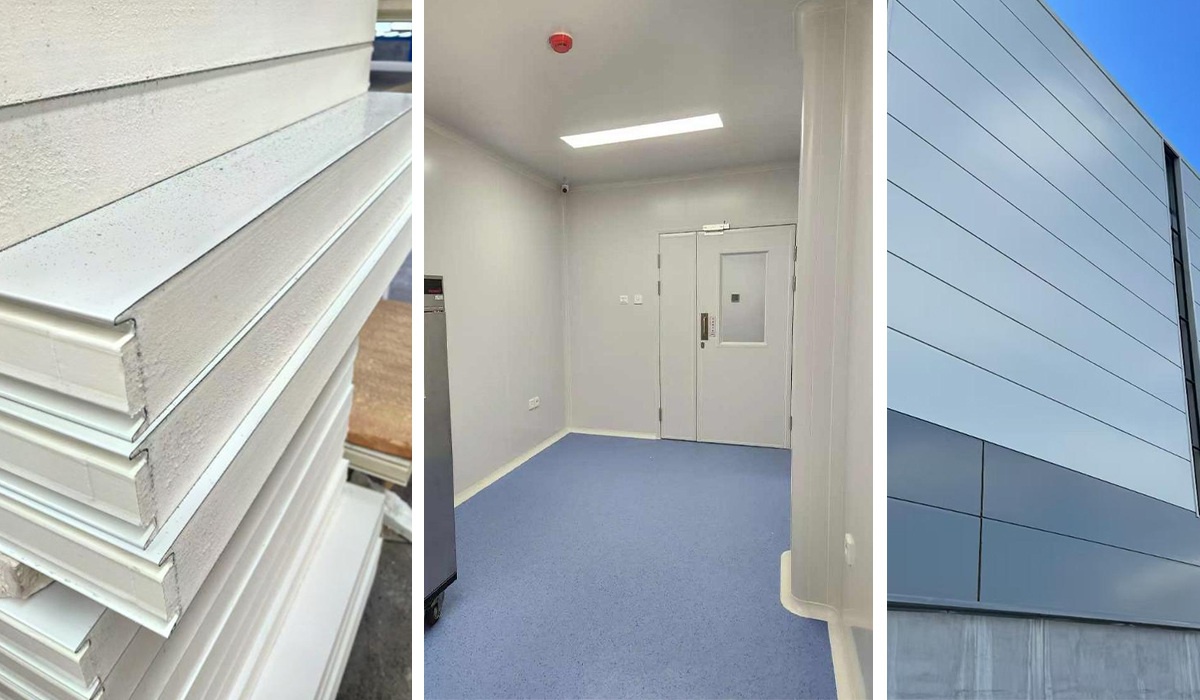
I. Introduction
Color-steel sandwich panels are becoming increasingly popular in the construction industry. These panels are composed of upper and lower layers of color-coated steel sheets and a filling material in the middle.
Ø Aesthetic Appeal
-They can be customized with different colors according to customers’ requirements, which not only meets the functional needs but also adds a touch of beauty to the buildings.
Ø Versatility in Applications
-They are widely used in various fields. For example, in the construction of industrial plants, they are a cost-effective option for small and medium-sized enterprises. Instead of building new permanent factories, using color-steel sandwich panels can significantly reduce costs as they are easy to assemble, have good fixability, and are simple and beautiful.
-They are also suitable for hospitals, pharmaceutical plants,cold storages, movable houses, building additions, clean workshops, and places where heat insulation, fire prevention are required.
II. Composition and Classification
Ø Composition
-The color-steel sandwich panel is mainly made up of two parts: the outer metal panel and the inner filling material. The outer metal panel is usually a color-coated steel sheet or stainless steel sheet, which provides strength and protection. The inner filling material can be different substances.
Ø Classification
-Based on Core Materials
• EPS (Expandable Polystyrene) sandwich panels are the most widely used in the market. They have certain insulation properties.
• XPS (Extruded Polystyrene) sandwich panels also offer good insulation performance.
• PU (Polyurethane) sandwich panels are known for their excellent heat insulation and durability.
• PIR (Polyisocyanurate) sandwich panels have a better performance on fire-retardant Class B1.
• PF (Phenolic) sandwich panels have good fire - resistant properties.
• RW (Rockwool) sandwich panels are preferred for their fireproof and heat-insulating capabilities.
-Based on Panel Types
• Metal-paneled sandwich panels are easy to process and can be made into various shapes.
• Stainless steel sandwich panels have advantages in terms of corrosion resistance and impact resistance in some cases.
III. Advantages
Ø Easy Installation
-The installation of color-steel sandwich panels is relatively straightforward. For example, the tongue-and-groove insertion type is often used, which is time-saving, material-saving, and can ensure good flatness and high strength, especially suitable for ceiling and partition systems.
Ø Lightweight
-They are lightweight, which reduces the load on the building structure. For instance, polyurethane sandwich panels weigh only 10-14 kilograms per square meter, making them easy to handle during construction.
Ø High-Efficiency in Performance
-They have good fire-retardant and sound-insulation properties. At the same time, the closed-cell molecular structure of the filling system can prevent water vapor condensation, which is beneficial for maintaining the indoor environment.
IV. Future Trends
Ø With the increasing emphasis on building fire safety and the promotion of environmentally-friendly green buildings, the development of color-steel sandwich panels is also moving in a more advanced direction.
-In terms of fire safety, there will be more research and improvement on the fire-resistant properties of the panels.
-For environmental protection, the development of more sustainable filling materials and production processes will be the focus. There may be more cooperation and exchanges among industry experts, manufacturers, and related professionals to jointly promote the innovation and development of color - steel sandwich panels.
Ø In conclusion, color-steel sandwich panels are an excellent building material with a wide range of applications and great development potential.

 Unit 409, Bestone Building, No.997, Tianma Road, Jimei District , Xiamen city, China Zip code: 361021
Unit 409, Bestone Building, No.997, Tianma Road, Jimei District , Xiamen city, China Zip code: 361021 Tel: 0086-592-6226343
Tel: 0086-592-6226343 Email: Market@luseninsulation.com
Email: Market@luseninsulation.com


